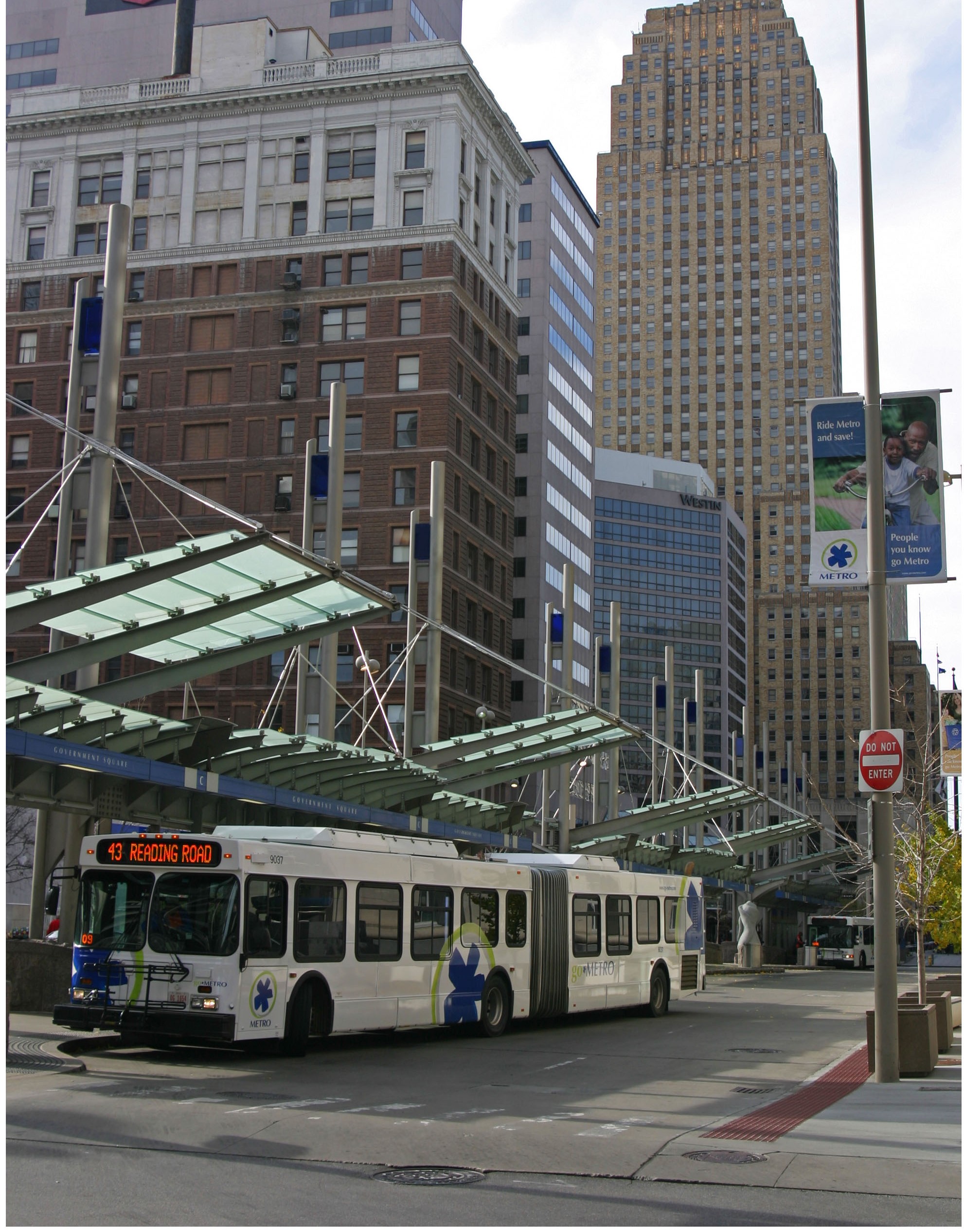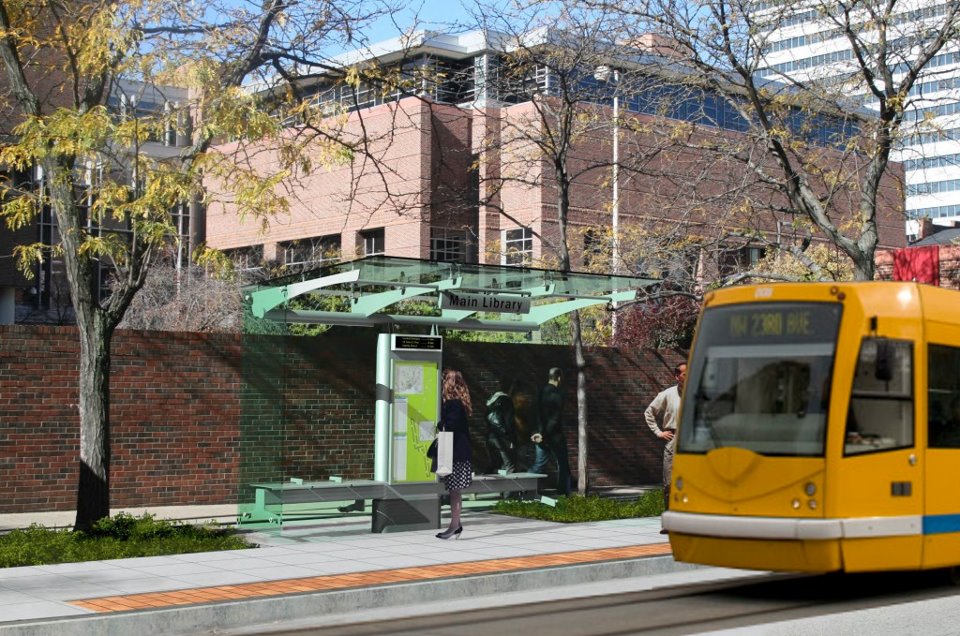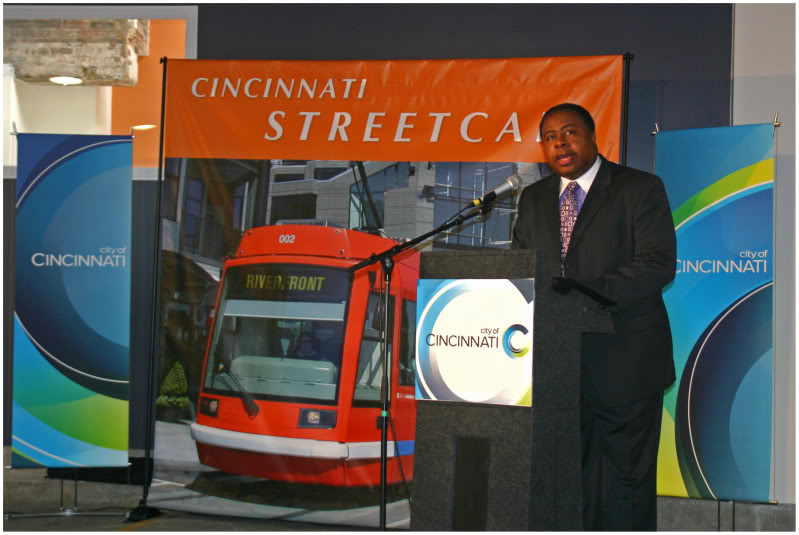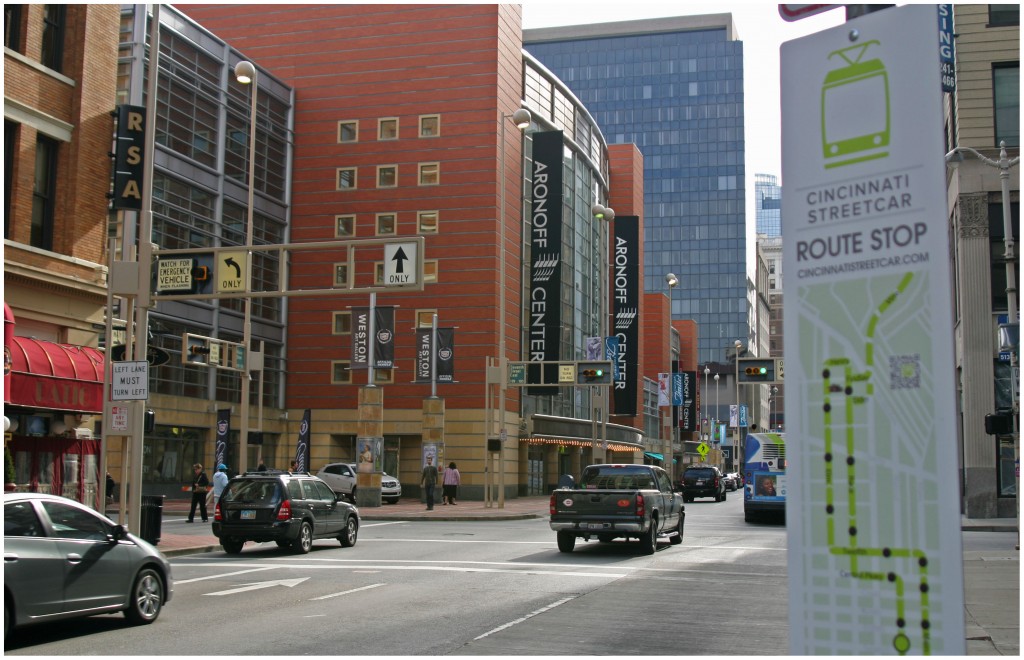Beginning March 1, Metro buses in Cincinnati will implement a new monthly pass system. The new system will allow riders to purchase rolling 30-day passes at any time, replacing the month-by-month system currently in place.
The new system was introduced last November after the city received $3.6 million federal grant to match their $900,000 local commitment. The total investment allowed for Metro to upgrade the fareboxes and monthly passes for all 342 buses in their fleet.
After only two months of the month-by-month passes, Metro decided to provide riders with the option to purchase passes on a rolling 30-day basis. The new rolling passes are part of an effort to increase public transit across the city.
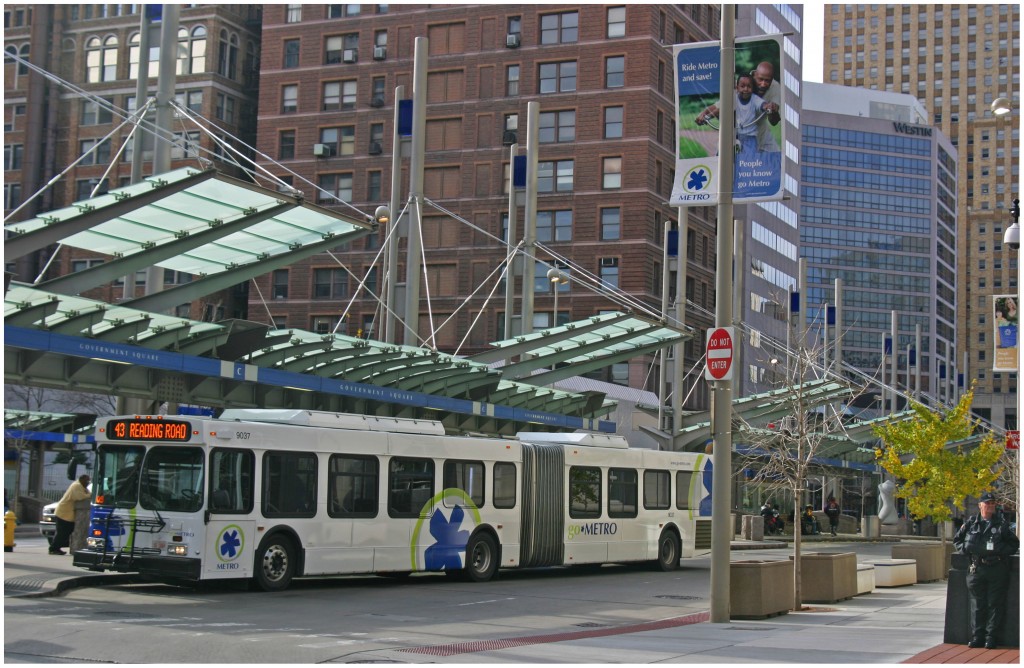 An articulated bus picks up passengers at Government Square in downtown Cincinnati. Photograph by Randy A. Simes for UrbanCincy.
An articulated bus picks up passengers at Government Square in downtown Cincinnati. Photograph by Randy A. Simes for UrbanCincy.
“We are striving to make public transit more convenient,” Metro public relations manager Jill Dunne told UrbanCincy. “Our goal is to increase public transit and to encourage people to take advantage of Metro.”
Metro also has plans to implement smart passes with a tap-and-go capability this summer. The idea is that the technological improvements will make using public transit easier, and offer riders greater flexibility with the cash value they store on their cards.
Over the course of 2011, UrbanCincy challenged its readers about Metro’s functionality and how to improve the system. The responses overwhelmingly said that the lack of GoogleTransit interface and the outdated payment system used were the two things in most need of improvement. In spring 2011, Metro finalized their interface with GoogleTransit, and now it appears as though the new payment options are a strong step in the right direction.
“Kudos to Metro. I still remember the time I saw the bus driver take a large utility knife to the coin collector, while driving because change was stuck and no one was able to pay,” Zachary Schunn commented. “I hope to never see that again.”
Dunne says that Metro is always open to new ideas, regarding both passes and the bus system in general, and that Metro has recently updated its website in an effort to make its information more accessible. Watch a YouTube video on how to use the new payment options.
